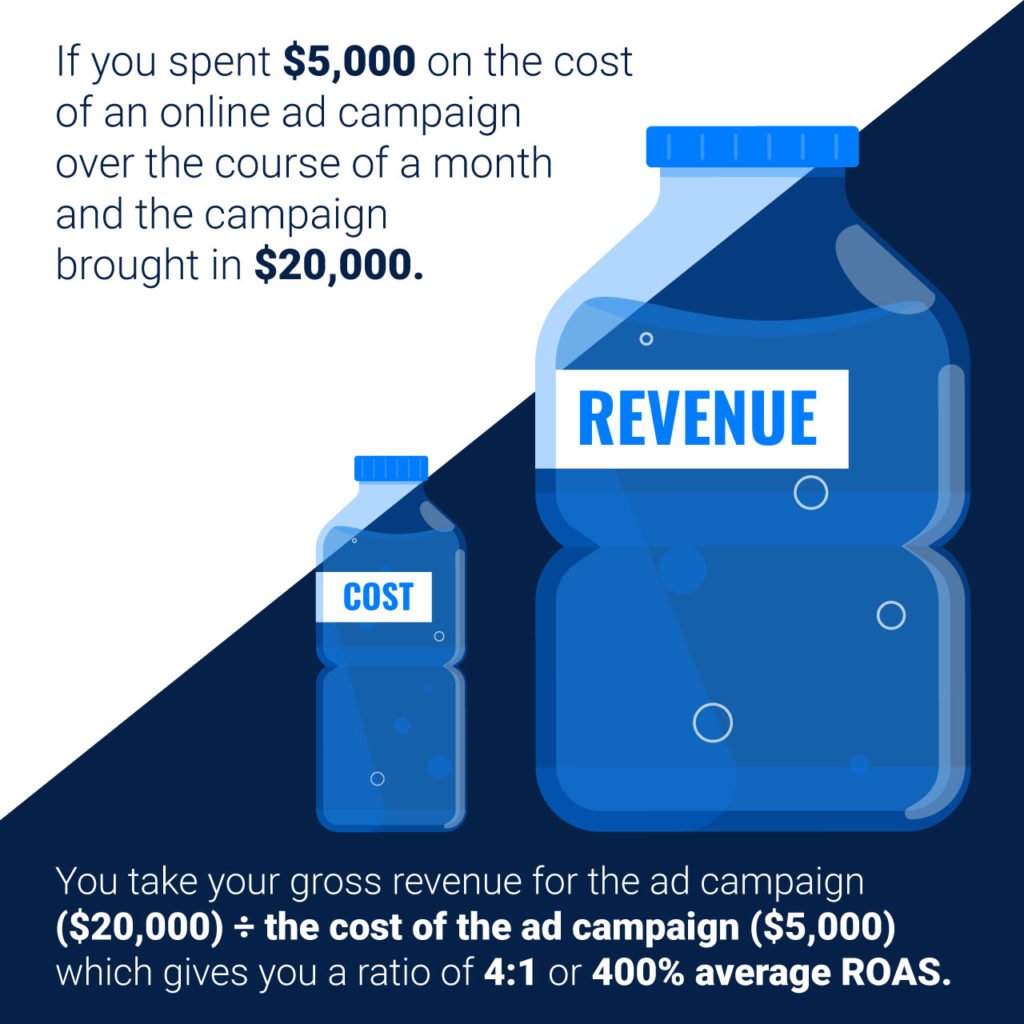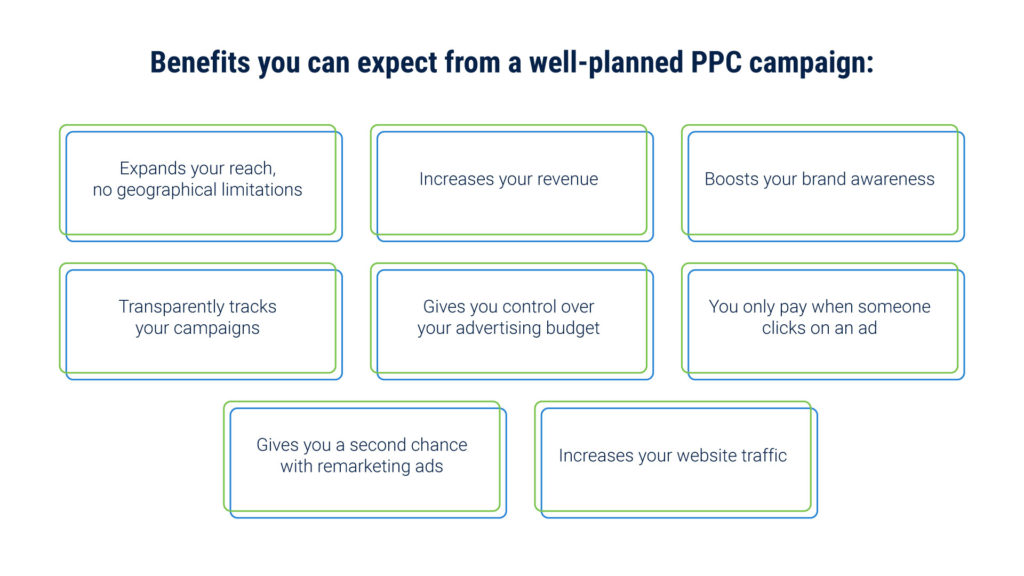ROAS calculation in modern-day marketing

Advertising your business is no longer as simple as taking out an ad in print media like the local yellow pages or the daily newspaper. While the mode of advertising has moved from print media to electronic media, the role of advertising has never been more important.
A well-planned marketing plan has a huge impact on your bottom line. One of the greatest challenges in marketing is figuring out how to ensure that your advertising efforts are paying off so that no part of your marketing budget is going to waste.
A strategy that involves driving traffic to your website and posting on social media isn’t enough on its own. The only way to discover whether your advertising campaigns are effectively working to your advantage is to calculate your return in comparison with how much you’re spending, which is referred to as ROAS.
What makes the process intensely more difficult is that click fraud may be secretly interfering with your efforts. Overall, a successful ad campaign requires you to be proactive in weeding out fraudulent clicks on your ads.
What Is ROAS?
It seems that marketing dollars never stretch far enough. That’s reason enough to put some time into figuring out which marketing campaigns are making money, and which are having the opposite effect.
ROAS is an acronym for return on ad spend. Calculating ROAS is an important part of your marketing campaign analysis because it tells you whether your ads are bringing in customers. ROAS provides valuable data that you can use to determine how much money you need to spend on your ads to get a certain amount of business from them.
Surely, you’re familiar with the term ROI, or return on investment. ROAS is different from ROI in an important way. ROI provides data to help you assess the impact of your marketing campaigns overall. ROAS, on the other hand, is a useful means of evaluating how effective specific campaigns are. You can apply ROAS to ad groups, keywords, and specific ad campaigns.
The beauty of ROAS is that it allows you to break down your marketing campaign by segments to evaluate every aspect of it individually. If a particular ad is delivering poor ROAS results, it’s time to change it or get rid of it altogether.
How to Calculate ROAS in 2020
While ROAS may be an unfamiliar term to you, it’s not difficult to calculate it. It’s time you figured it out
You simply divide the revenue that your ad campaign earned by how much you paid for it.
For example: If you spent $5,000 on the cost of an online ad campaign over the course of a month and the campaign brought in $20,000.
You take your gross revenue for the ad campaign ($20,000) ÷ the cost of the ad campaign ($5,000) which gives you a ratio of 4:1 or 400% average ROAS.

This means that your ROAS is $4 and for every dollar that you spend on the same advertising campaign, you should receive $4 of new revenue.
The Value of Pay Per Click Advertising and the Part it Plays in ROAS
Healthy businesses have forward-thinking marketers. One of the best marketing strategies for today and for the foreseeable future is pay per click advertising. PPC advertising is a popular strategy with digital marketers. It has become a powerful marketing tool because most marketers find that it has proven success.
There are a couple of very important reasons to start using PPC ads or keep using them if you’re already doing it.
1. Bing and Google PPC ads are fairly inexpensive on a cost-per-click basis as compared with other marketing strategies and you can quantify your results.
2. They make it easy to target the personas that are likely to purchase your products or services.
In fact, about 45% of businesses use PPC advertising to attract more customers and make sales. Those that make PPC ads part of their overall marketing strategies keep working to improve their PPC ad campaign strategies because it gives the company multiple distinct advantages.
These are some of the benefits you can expect from a well-planned PPC campaign:
- Expands your reach, no geographical limitations
- Increases your revenue
- Boosts your brand awareness
- Transparently tracks your campaigns
- Gives you control over your advertising budget
- You only pay when someone clicks on an ad
- Gives you a second chance with remarketing ads
- Increases your website traffic

Google highlights the ways that PPC ads build brand awareness and create positive associations with your company’s products and services. PPC ads give you several ways to get your prospects to engage with your brand—videos, games, website visits, etc.
PPC ads give your company access to the Google Display Network which is made up of over 2 million websites, videos, and other platforms where your ads could be displayed. The Google Display Network sites extend to over 90% of the users on the internet around the world. Access to the Network lets you target the context of your ads according to the type of product or service and the specific audiences that you’re trying to attract. The Google Display Network puts your company in front of the right customers at the right time on thousands of the right websites.
Google boasts the ways that their PPC ads will positively impact your brand:
- Increases the number of interactions with your brand.
- Builds more positive associations with your brand.
- Increases your target audience’s loyalty
- Inspires customers to engage with your brand.
Over 4 billion people pull up the internet across the globe every day. Almost 2 billion of those people are shopping around for the items they’re interested in buying. A well-designed PPC campaign will bring the right buyers directly to the door of your website. If you think that your website alone will do the trick, those buyers will most certainly be checking out your competition.
While there is plenty of good news to celebrate using PPC ads as a marketing strategy, the news isn’t all good. Not every click that you get on a PPC campaign comes from a buying customer. PPC click fraud is a formidable enemy that’s looming behind the scenes. It’s poised to ravage and destroy the marketing budget that you’ve set for your PPC campaigns. You need to be aware that ad fraud may be targeting your PPC ad campaigns.
Click fraud will cause you to miss important opportunities for sales. Fake clicks will cost you money and they could even run you out of business altogether. While ad fraud is rising at an astounding rate, don’t get terribly discouraged just yet. There is hope on the horizon for keeping ad fraud at bay.
Click Fraud Stats Tell the Real Story
If there is any doubt about the threat of click fraud, the following statistics will give you an indication of how prevalent click fraud is and the risk that it poses to your PPC ad campaigns.
- Forbes reported that the Russian Methbot Operation profited $3-$5 million daily from their click fraud and ad view fraud bots.
- The cost of click fraud is hard to tally, but recent estimates point to a range between $6.5 billion and $19 billion.
- Ad fraud also targets new markets and technologies that haven’t yet implemented robust detection algorithms.
- The Wall Street Journal reports that ad fraud activity is highest on Microsoft Edge and Google.
- About 50% of the impressions on Internet Explorer are bots.
- The Association of National Advertisers estimates that businesses could lose up to $7 million on ad fraud.
These facts and statistics are concerning for businesses and they’re likely to grow with time.
The Impact of Click Fraud on ROAS
PPC ads are at risk of click fraud and that means you need to be aware of the impact that it can have on your ROAS campaigns. It’s important to consider that ROAS has a bearing on the expense of your PPC ad campaigns. To meet your ROAS, it’s vital to keep a strong pulse on your expenses and your budget.
Click fraud can skew your numbers and bring them down, often before you have a chance to detect it. People that pursue click fraud use sophisticated practices that often mirror the behavior of legitimate customers and drain your budget in short order.
When your ad campaigns aren’t performing well, it’s prudent to spend some time investigating the cause. It’s possible that your ad campaign is actually working, but it’s being thwarted by click fraud, and it’s digging into your profits as a result. To discover that bots or other fraudulent activities are wasting your advertising budget is a hard reality to face.
By keeping a steady watch over your PPC ad campaigns and diligently calculating ROAS, you should be able to detect incidences of Google ad fraud and take action to prevent it.
Address Click Fraud as Part of Your Marketing Efforts: Factoring Click Fraud in ROAS
You’re already aware of the importance of meeting your business goals to increase revenue and ensure that your PPC campaigns are working as you intended them to.
When your ROAS drops by tens of percentages within weeks or months, you have to go back to the drawing board and figure out what is causing it to drop so steeply. Having this kind of situation on your hands can force you to spend enormous amounts of time figuring out where things have gone awry and how you need to tweak things to get it all back on track.
Something that should enter your mind is whether you’ve been a victim of PPC click fraud. On a positive note, it’s fairly easy to detect click fraud problems. Once you detect click fraud, there are specific steps that you can take to manage it so that it doesn’t continue harming your business.
No one can claim they haven’t been a victim to Click Fraud
The reality is that most click fraud attacks all stem from the same IP address and that’s a good place to start looking for it. If you’re vigilant, there are some simple ways to detect the red flags that indicate click fraud activity. Look for these kinds of things:
- Unusual spikes in impressions or ad clicks that don’t correspond to conversions.
- An increase in clicks and a higher bounce rate.
- Unusual traffic spikes along with a drop in page views.
Finally, don’t let click fraud discourage you. If you’re suspicious about click fraud on your ad campaigns, here are some steps that you can take:
1. Analyze your ad data proactively-you alone are responsible for your Google ads. That’s why you need to stay on top of how much you’re spending on your ad campaigns. Schedule a time every week or every month to monitor your campaigns for suspicious activity so you can take action early on in the campaign.
2. Check your IP addresses for fraud-remember that fraudulent clicks often come from the same IP address. Once you detect a bad IP address, all you have to do is exclude it in your Google Ads account and it will mask your ads from their view.
3. Monitor the geographical areas of the IP addresses-if you notice that you’re getting a large number of clicks from a particular geographical area, it’s wise to exclude that area right away.
4. Use click fraud tools like ClickGUARD-your time is very important and rather than spend countless hours on tracking and monitoring fraudulent activity, invest in the professional click fraud prevention tools that ClickGUARD offers.
By monitoring your ad campaigns and addressing click fraud, your ROAS will improve because you won’t be wasting valuable marketing dollars on imposter traffic that doesn’t bring in business.
There is no need to allow people or bots to waste your time by forcing you to deal with click fraud. Third-party software, such as ClickGUARD, allows you to automatically analyze your Google Ads clicks and know whether a real customer is interested in your business, as well as block the fraudulent clicks. ClickGUARD uses a sophisticated algorithm to exclude suspicious IP addresses before they attack your ads. Fighting click fraud is a tough battle but when you arm your ad campaigns with ClickGUARD’s reliable software, you can win the war against click fraud.
ROAS is important because it tells you what you need to do to meet your financial goals. You’ll want to keep it as high as possible so your budget works for you rather than against you. ClickGUARD can help you do that without impacting the time you need to spend on your business.



